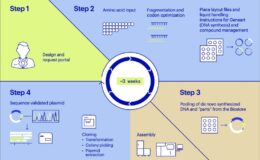
Even though business and technology leaders understand the importance of data for effective decision making, they struggle with how to best use data, according to a new report from Forrester, “Data Literacy: What Is It, And Why Do Executive Teams Need To Care? Leveraging Data To Achieve Maximum Business Benefit Requires More Than Technology Tools.”
The report focuses on how data literacy is a vital ingredient often missing, partly or entirely. It “delves into what data literacy really means and why it’s fundamental for business.” Chief information officers (CIOs) should use the report (and an included checklist) to detect the symptoms of data illiteracy and avoid its pitfalls.
SEE: Mobile device security policy (TechRepublic Premium)
“Companies with lower levels of data literacy in the workforce (at all levels, from field engineers to CEOs and the Board) will be (and in many cases, already are) at a competitive disadvantage,” said Martha Bennett, vice president and principal analyst, Forrester. “It’s also important to stress that different roles have different requirements for data literacy; advanced firms also understand that increasing data literacy is not a once-and-done training exercise, it’s a continuous process.”
Key takeaways: everyone should be data literate
These days, everyone in an organization needs to be data literate, and the organization must establish a well-rounded data literacy program to ensure effective decision making. The programs must address the capacity to collect, analyze, and disseminate data tailored to the needs of diverse organizational roles.
Data literacy is a prerequisite for insights-driven firms
Forrester’s survey results confirm the need to improve data insights:
- 25% of purchase influencers say that improving the use of data insights in business decision making is a high or critical priority for their firm.
- 60% say that it’s a moderate priority.
- Only 9% say that they don’t find it much of a challenge.
- 41% report that they find it very or extremely challenging.
Making sense of data is part of everyday life
“Lack of data literacy puts you at a disadvantage, and can lead to potentially disastrous outcomes,” Bennett said, “and we’re not just talking about a business context here, the same applies in our personal lives.”
Numbers play a role in daily decisions, both in business and in our personal lives. Quantitative information must be evaluated, whether it’s predicting an event, considering the increased risk of developing disease, how people lean politically, or how popular a product or service is. Data, as facts, supports arguments and pushes agendas
Being data illiterate can be an issue, because you run the risk of:
- Not recognizing the tricks people play when visualizing data (manipulating facts).
- Confusing correlation with causation and taking seeming correlations at face value (correlation doesn’t equal causation; not all correlations are meaningful).
- Not questioning the real meaning of the words representing data insights (again, manipulating facts to emphasize an agenda).
- Failing to watch out for how data is used in text (consider that looking at the actual data is more complex and may not support the argument of the article, book, essay, email, message).
Omitting inconvenient information is one way to mislead with data presentation, and charts that don’t show scale and don’t start from zero can mislead by exaggerating differences.
Data producers can make the problem worse
An example of manipulative data producers include chart interpretation or deriving meaning from data visualizations. The report revealed:
- Charts and dashboards overwhelm rather than enlighten.
- Data visualizations or dashboards are difficult or impossible to interpret.
- The complexity of the data or analysis leads to overly complex representations.
- Data access is not accompanied by adequate guidance or assurance.
Data literacy doesn’t mean the same for everyone
Forrester defines data literacy as: “The ability to recognize, evaluate, work with, communicate, and apply data in the context of business priorities and outcomes. Data literacy is the ability to read, work with, analyze, and argue with data.”
- Read data (understanding how it applies to everyone in the organization).
- Work with data (creating, acquiring, cleaning, managing data).
- Analyze data (filtering, sorting, aggregating, comparing, and performing analytic operations).
- Argue with data (pushing back against data, not taking it at face value).
- Data literacy isn’t only a single skill or the ability to use a tool–needs vary.
- Data literacy isn’t a question of tools. An employee reviewing a data catalog must comprehend what the data represents or how to use it.
Tool competency doesn’t equal data literacy. Conversely, the most advanced statistical skills and tool proficiency won’t produce valuable insights if the person using them lacks domain expertise or business context. Data literacy exists at the intersection between data, tools, and individual skills and expertise.
Consider, the report noted:
- Numeracy isn’t the same as data literacy, but basic numeracy is essential.
- It’s impossible to understand data without understanding where it comes from.
- Just looking at the numbers isn’t enough.
- Digital literacy and data literacy are entirely separate.
- Statistical skills are important, but not everybody needs them to the same degree.
- Self-service takes many different forms, requiring different skills.
- Domain expertise–understanding of your business–and critical thinking are key.
How to make your firm data literate
A firm can push their company towards data literacy by making data critical in all areas of business, looking for gaps to find your starting point, establish a data-literacy program, and make sure it’s role-based, and focusing as much on the providers as the users.
Data literacy extends beyond the office
- Work on the root causes of the lack of data literacy.
- Accept the importance of data literacy in all walks of life.
Checklist to assess the state of data literacy in an organization
The report offered the following “checklist” for organizations–how data literate is your business?
-
Dashboards falling into disuse
-
Lots of unused licenses for self-service tools
-
Co-workers saying “I have no affinity for data,” or “I just don’t do numbers.”
-
Gut feel remains the primary decision-making criterion
-
Decision makers “bending” data to suit their argument, and nobody pushing back
-
Executives asking for “whatever data you can get your hands on”
“Lack of data literacy is a problem in both corporate and personal life,” Bennett said. “Until data literacy is taken for granted in the same way as `traditional’ literacy, the ability to read and write, we’ll have issues, whether it’s bad decisions in companies or societal consequences because numbers are used to push positions that in reality the data doesn’t actually support.”
Survey methodology
The Forrester survey was fielded in March and April 2019. This online survey included 3,417 respondents in Australia, Canada, China, France, Germany, India, the UK, and the US from companies with 100 or more employees.
Also see

Image: Getty Images/iStockphoto















